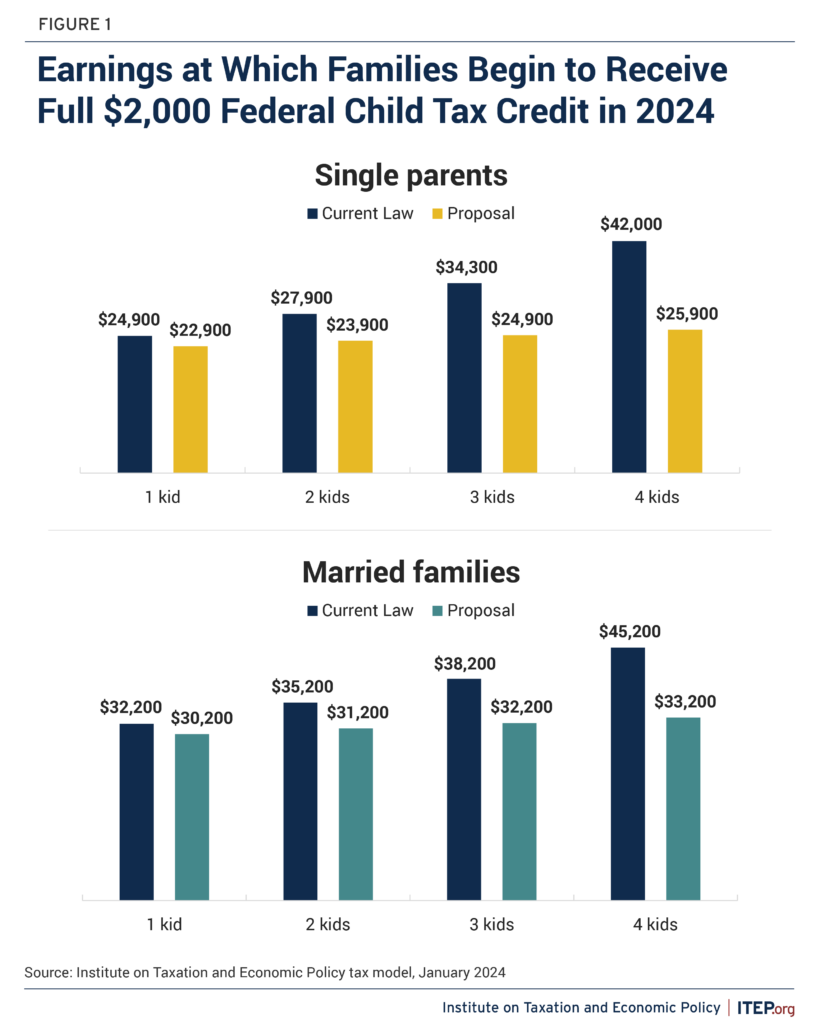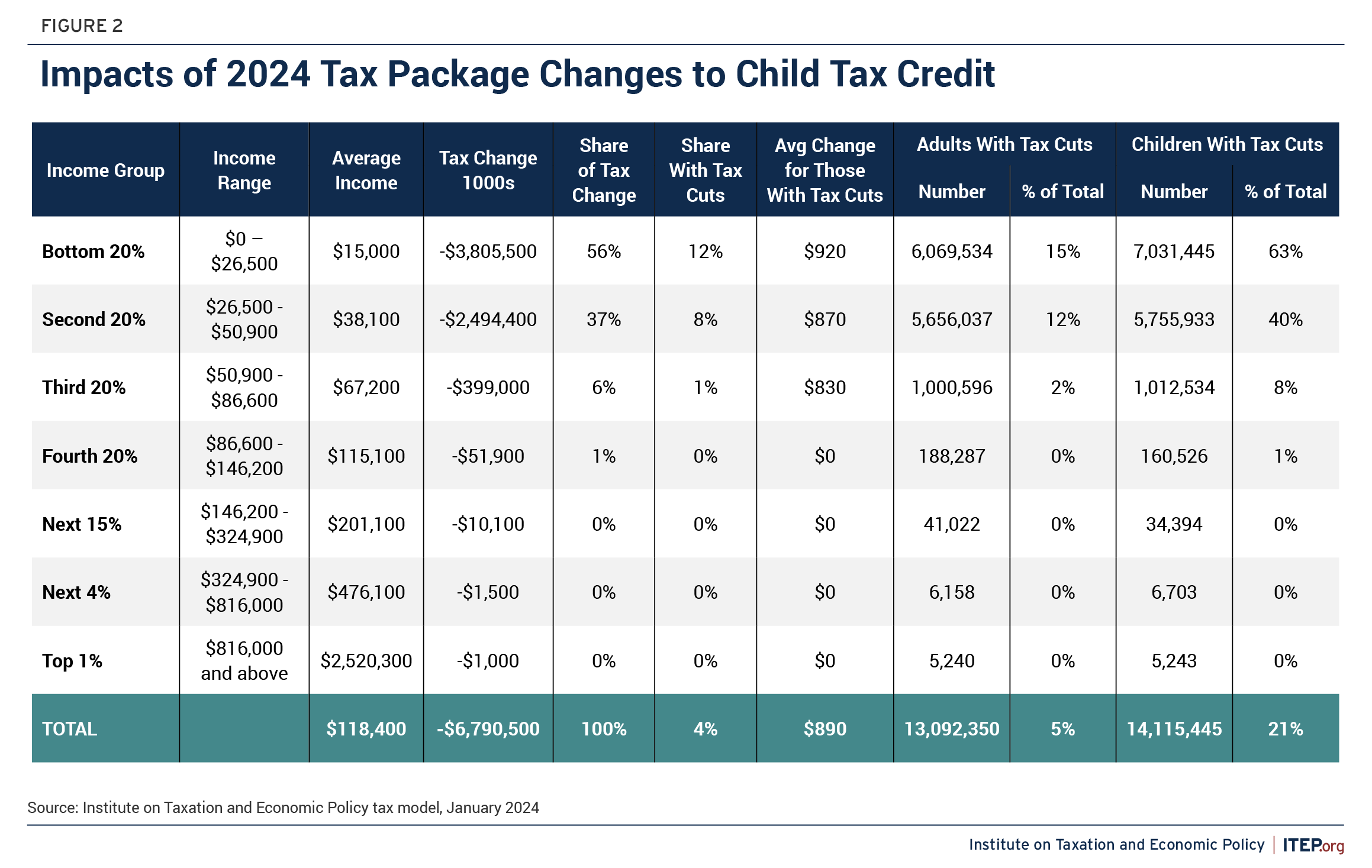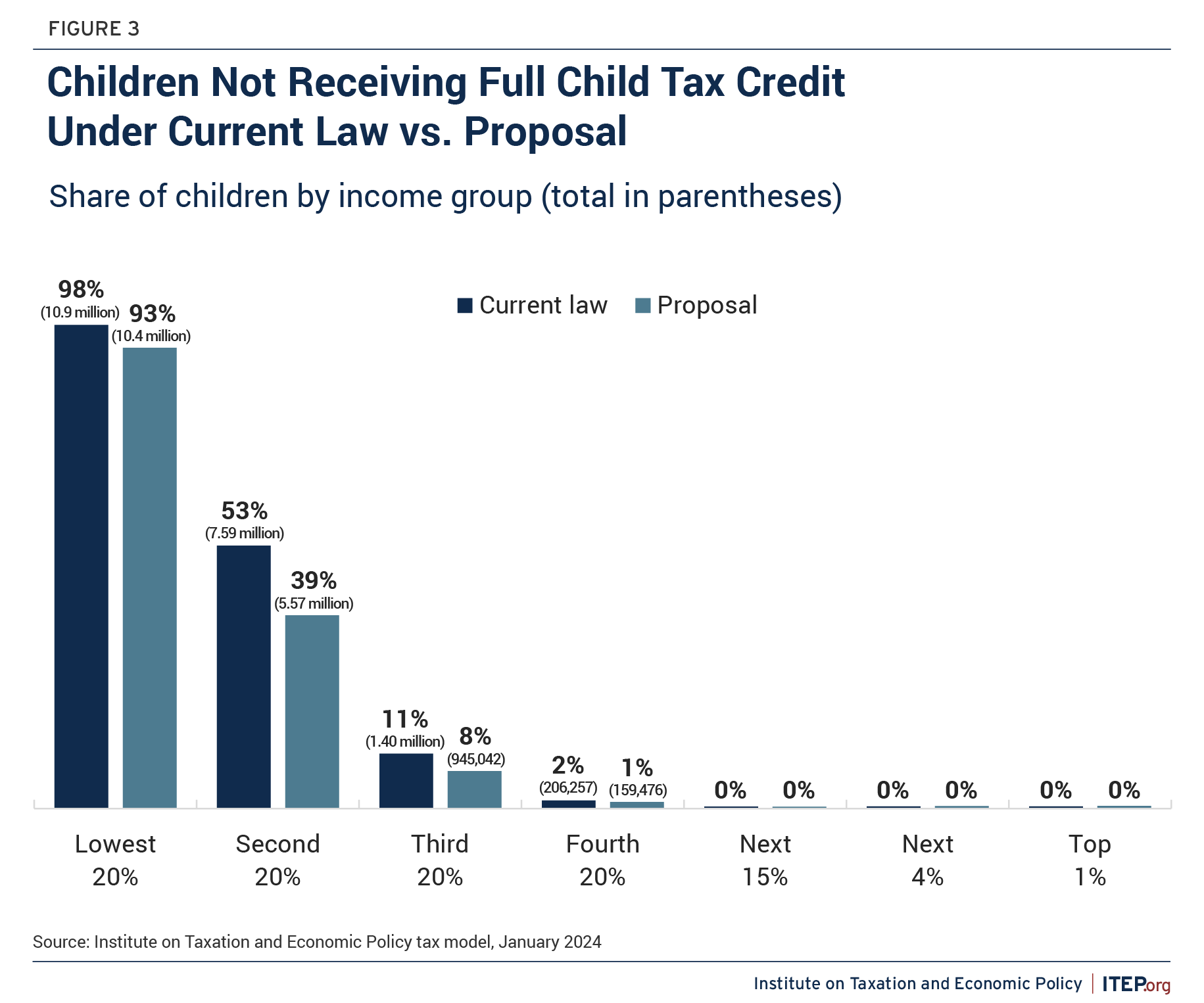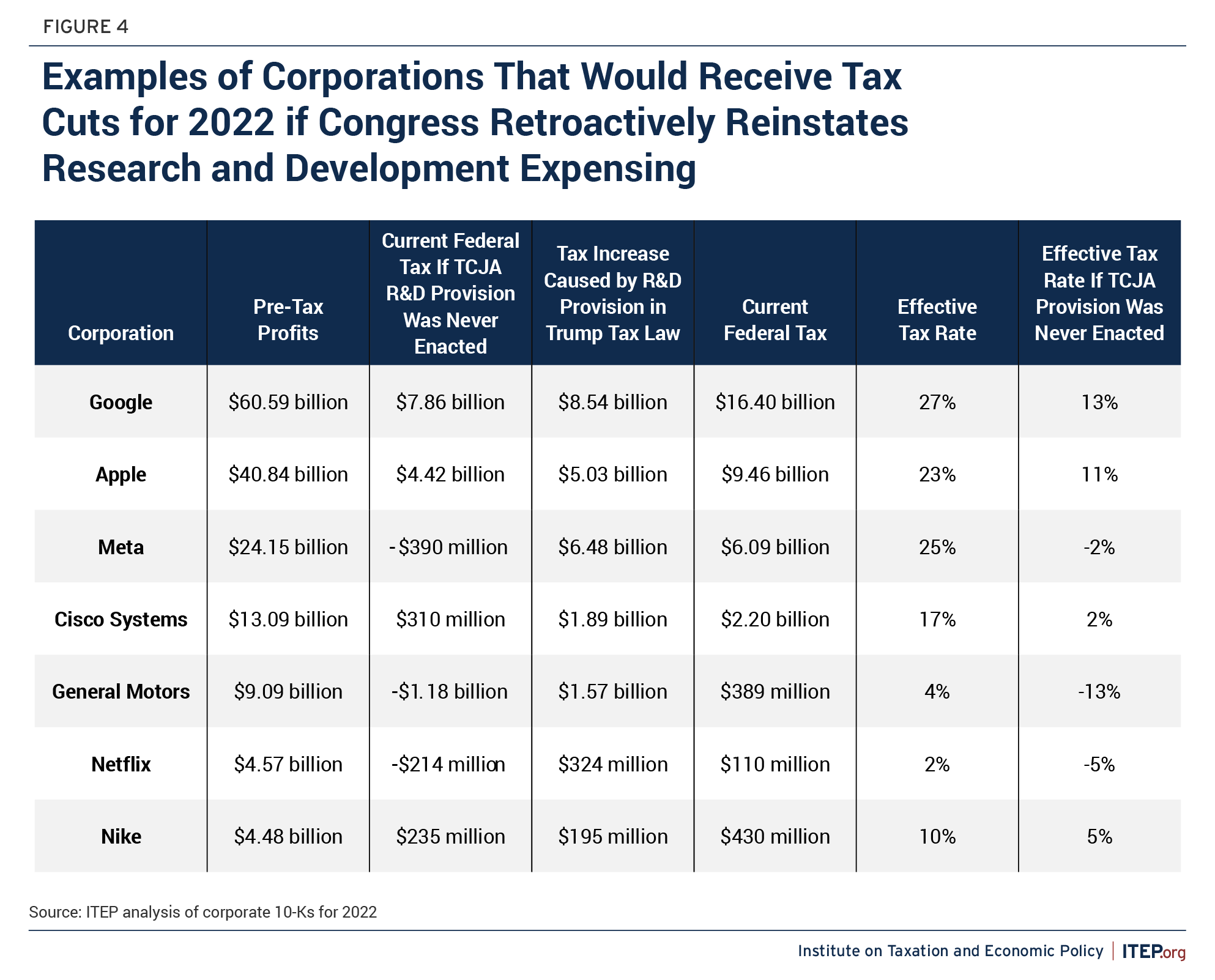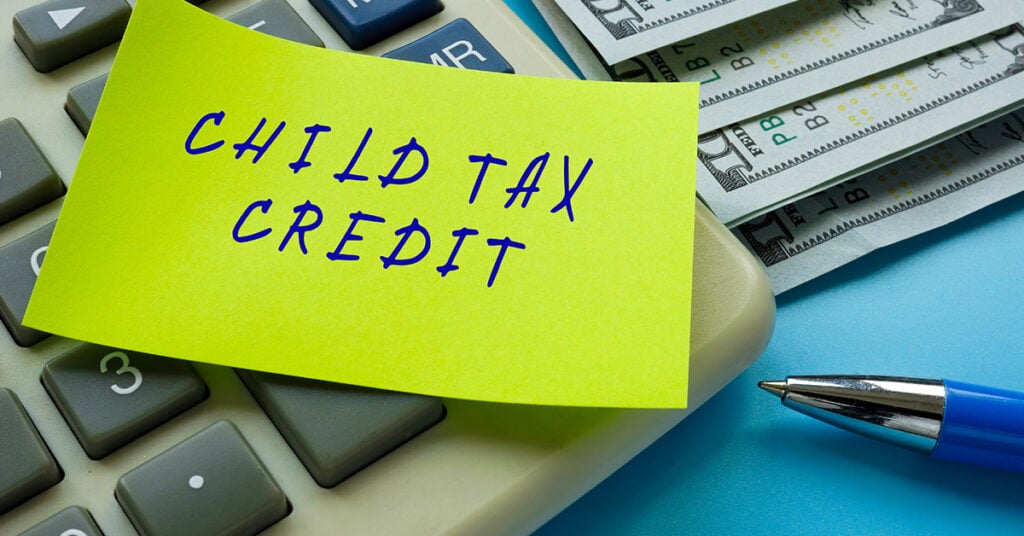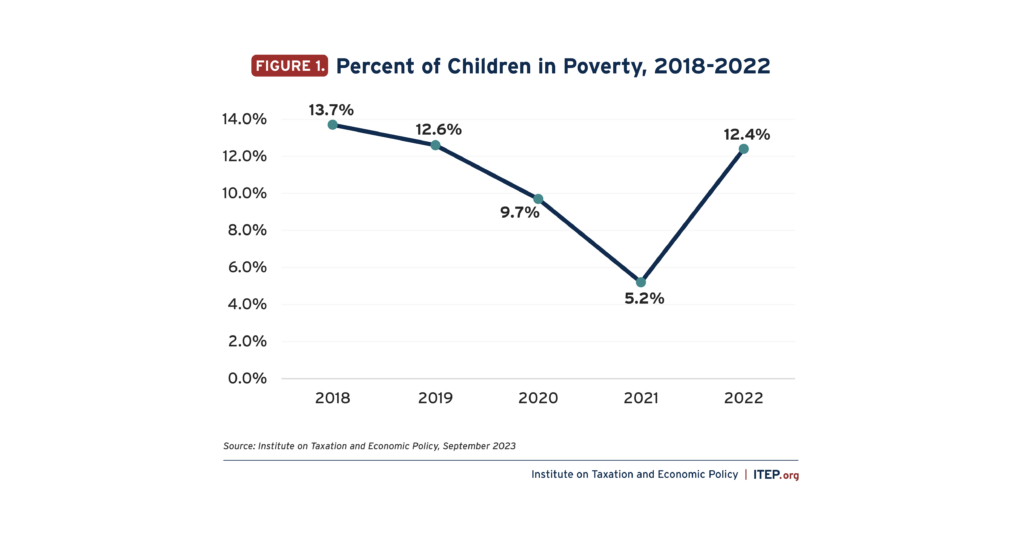On January 16, Congressional tax writers officially announced the details of a tax policy agreement. The deal includes expansions of the Child Tax Credit (CTC) to improve access for low- and middle-income families as well as expansions of the 2017 Trump tax cuts for businesses.
The agreement also includes bipartisan tax priorities tax provisions for disaster relief, affordable housing, and implementation of an agreement between the United States and Taiwan. The costs of the entire bill are offset by cracking down on fraudulent claims of the Employee Retention Tax Credit, a pandemic relief policy that has become rife with dubious, retroactive claims in recent years.
Effects of Proposed Child Tax Credit Changes
Expansion of the Child Tax Credit became a key priority for progressive lawmakers after the success of the temporary expansion in 2021. That expansion – which helped cut child poverty nearly in half that year – increased the credit amount, made the credit fully available to all families regardless of their amount of earnings, and allowed families to receive the credit in monthly payments rather than as a lump sum on their tax refund.
When the credit expansion lapsed in 2022, child poverty nearly doubled, reverting back to the level prior to the increased family benefits that were briefly available during the height of the pandemic. ITEP estimates that if the 2021-level credit were made permanent, nearly 60 million children would benefit this year alone.
This agreement falls far short of making the credit fully available to low-income families. It also does not increase the credit amount by the same levels as the 2021 credit, though it would slightly increase the credit amount in future years by tying it to inflation. The proposal also does not make the credit available monthly.
Most problematic, the deal overall leaves in place overly strict work requirements that apply only to poor families. A well-off family living on investments or a trust fund and doing no work whatsoever can receive the full Child Tax Credit. But the part of the credit that helps families too poor to have much income tax liability (the refundable portion of the credit) is limited to a fraction of their earnings above $2,500.
This deal does not change that. The proposed CTC expansion does, however, make these rules a little more generous to millions of children and families currently receiving little or nothing, particularly, families with more than one child. Under current law, a family with several children often receives a smaller credit per child than a family with the same earnings but only one child. This agreement would fix that flaw by phasing in the credit for each child separately, ensuring families at the same income level get roughly the same credit per child.
The proposal would also eventually remove the rule that limits the refundable portion of the credit to a smaller amount than the full credit that better-off families receive. Currently, the refundable amount is capped at $1,700 per child compared to $2,000 for the non-refundable portion. This proposal would increase the refundable portion to $1,800 in 2023, $1,900 in 2024, and the full $2,000 credit (adjusted for inflation) in 2025.
Currently, a married couple with four children needs about $45,200 to receive the full credit compared to just $32,200 for a married couple with one child. Under the proposal, a married couple with four children would need $33,200 in earnings compared to $30,200 for a family with one child.
Under current law, 20.6 million children will receive a reduced credit or no credit at all in 2024 due to the limits on the refundable portion of the credit, including 98 percent of children in families in the bottom 20 percent of earners and 53 percent of children in families in the next 20 percent. Most of these children – 14.1 million children – would benefit from this proposal. But even under this proposal, 17.5 million children would receive a reduced credit or no credit.
The proposal includes another reform that is not included in these estimates, a “lookback rule” allowing families to use their earnings from the prior year to calculate their credit if they exceed the family’s earnings in the current year. This lookback option would help even more of the children currently not receiving the full credit, but it is not included in our analysis.
On average, families benefiting from the credit changes would see a tax cut of about $890 this year. Families in the bottom 20 percent would receive the largest average tax change. More than 90 percent of the benefit of the tax change in 2024 would go to families with income less than $50,900. Fourteen million children – about a fifth of all children – would benefit from the proposal.
Tax Cuts for Business
The 2017 Trump tax law – projected to cost $1.5 trillion over a decade at the time it was enacted – included several cost-containing provisions that were supposed to keep the cost of the overall package from exploding even more. Lawmakers set certain tax breaks to expire or phase out after 2021, which brought the ten-year cost estimate for the enormous tax giveaway down a bit.
If Congress passes this agreement, nearly all those cost-containing measures will be reversed. Worse, the budget gimmicks continue as the agreement hides the true cost of these business breaks by only extending them on a temporary basis. Since many of these provisions deal with the timing of when tax liabilities occur, extending them temporarily means that the government reaps back some of the losses after the extensions expire. But corporate lobbyists and their supporters in Congress will certainly push to continue extending these provisions, and the costs balloon if they are made permanent. These provisions would likely cost more than half a trillion over the next decade if they are made permanent, according to previous estimates from the Congressional Budget Office.
Research expensing
This tax break is supposedly an incentive for corporations to conduct research that benefits society, but lawmakers have not asked what it has accomplished.
- Some activities subsidized by this tax break do not meet any definition of “research” that most people would understand. Companies urging Congress to extend this tax break range from a brewery and a company that develops frozen and packaged foods to a sausage business and a company that develops electronic games for casinos. Lawmakers should ask what “research” this tax break supports before blindly extending it.
- Many of the companies lobbying for this tax break have paid very little in taxes. Netflix, for example, has paid federal corporate income taxes equal to less than 1 percent of its reported profits over four years.
- Read more about research expensing here.
The bill would reinstate this supposed incentive to conduct research not only for 2024 and 2025, but retroactively to 2022 and 2023. It is plainly impossible to really incentivize anything retroactively because doing so rewards companies for what they did in the past rather than encouraging their activities going forward.
The table below illustrates a handful of companies that saw their federal corporate income tax bills increased in 2022 by the provision of the Trump tax law (the Tax Cuts and Jobs Act, or TCJA) that shut down the research and development expensing tax break.
The table illustrates only the effect of this one TCJA provision, which ends the R&D expensing and replaces it with an amortization requirement, meaning companies must spread deductions for research out over several years rather than claiming them all in the year the expenses are incurred.
(This table does not illustrate the effects of the other TCJA provisions, which are not made public by the companies but which probably lowered their tax bills overall.)
The tax bill before Congress now would retroactively repeal some portion of the tax increases that began in 2022 under this rule and which are shown here.
It would not repeal quite all of the tax increase shown there because the bill would leave TCJA’s less generous rule in place for research and development carried out by corporations abroad. It would only restore expensing for R&D carried out in the U.S. This means that the companies listed in this table would likely see some, but not necessarily all, of the 2022 tax increase shown here reversed under this legislation.
Bonus depreciation
This tax break allows companies to deduct the cost of equipment the year they purchase it, rather than deducting the cost over several years until the equipment wears out. This extreme version of accelerated depreciation raises several problems.
- Accelerated depreciation has let many large corporations (Verizon, Amazon, Walt Disney, Con Edison, General Motors, Dish Network, and others) largely avoid taxes, particularly during the last several years when this bonus depreciation provision has been in effect.
- Bonus depreciation is supposed to encourage investment, but research shows that corporate leaders pay little attention to depreciation tax breaks when making investment decisions, even though their tax departments naturally exploit them to the greatest extent possible.
- Read more about bonus depreciation here.
Looser limit on deductions for interest payments
This proposal would overturn a stricter limit on deductions that businesses take for interest payments they make on their debt and would extend the more lenient rule that was in effect until last year.
- Without strict limits, the tax deduction for interest payments results in the tax code favoring corporations that borrow money over corporations that raise funds from investors by selling shares.
- This provides an unwarranted subsidy to private equity firms that buy businesses and load them up with debt, which often results in the companies spiraling into bankruptcy.
- In recent years this practice has led to the collapse of Toys “R” Us, Payless and other well-established companies.
- Read more about the looser limit on interest deductions here.
Expanded Small Business Expensing
This provision, raising the limits on investment that can be deducted immediately under section 179 of the tax code, is more or less bonus depreciation but limited to relatively smaller companies.
- The Tax Cuts and Jobs Act allowed full expensing of up to $1 million in investments in equipment (up from $500,000 previously) for companies that invest less than $2.5 million a year (up from $2 million previously).
- These rules are already generous enough to benefit companies that most Americans think of as “small businesses.”
- The legislation Republicans plan to consider would increase those limits further, so that up to $2.5 million could be invested by companies that invest up to $4 million in a single year.

